
Tranalysis
The legendary ancient times
Suirenshi taught people to make fires. Humanity began to cook and make edible sacrifices, and the road to civilization began.
Hou Ji, the god of grain, taught the people to grow millet.
The Yellow Emperor (about 3000 BC) taught people to make pottery and taught them to cook the staple grain by steaming.
Neolithic Age
(10000- 3500 BC)
China was the first to grow rice and millet in the world.
Steamers appeared in cooking utensils for the first time.
There is evidence that people may have started using chopsticks during this period.
People began to use grain to make wine.
commercial
(About 1600- 1046 BC)
About 1600 BC, chef Yi Yin was granted the title of prime minister by Shang Tang, the founding monarch of the Shang Dynasty.

Yi Yin
Chopsticks are used for cooking and are likely to have been used as tableware for eating.
The cooker "tripod" became a symbol of class and power.
"Zhou"(1105- 1046 BC), the last king of the Shang Dynasty, indulged in extravagance and indulged in "wine pools and meat forests".
Zhou, Spring and Autumn Period and Warring States Period
(1046- 221 BC)
"Zhou Li", compiled in the third century BC, records that more than half of the palace people (more than 2,000 people) in the early Zhou Dynasty were managed by catering workers (the king's catering supervisor) to prepare meals for daily meals and sacrificial ceremonies. Turtles, shellfish, game meat, ice, salt and pickled vegetables... nutritionists and experts from multiple fields are here.
Everyone eats soup (stewed dish/soup).
Around 1000 BC, the earliest artificially cultivated soybean may have appeared in history.
The Chinese began to make fermented sauces, called "sauce", which later became "sauce", the ancestor of soy sauce.
In the golden age when philosophical theories blossomed, sages preferred to use food and cooking as a metaphor to tell important truths:
Lao Tzu, the author of Tao Te Ching, once said,"Governing a big country is like cooking small delicacies."
Confucius (551- 479 BC) would not eat food if it was not cut square or out of line with the seasons. ("If you don't cut it properly, you won't eat it." "From time to time, don't eat.")
Mencius (4th century BC) said that "a gentleman is far away from cooking" and said that between fish and bear's paw, he would "sacrifice the fish and take the bear's paw."
Gaozi (about the 4th century BC) said: "Food and sex are the same."
Zhuangzi (ca. 365- 290 BC) described the superb knife skills of the cook Ding when he cut off an ox.
Qu Yuan (ca. 340- 278 BC) wrote two poems aimed at summoning the return of the dead, and the descriptions of delicious food were mouth-watering.
In the 3rd century BC, Lu Buwei (291- 235 BC) compiled "Lu's Spring and Autumn Annals", which contains "Ben Wei", which describes the wonderful remarks of Yi Yin, the originator of the chef, about delicious cooking.
Qin
(221- 206 BC)
Qin Shihuang, the first emperor in Chinese history (259- 210 BC), was buried with his army of "Terracotta Warriors".
han
(206 BC-220 AD)
With the help of stone mills originating in Central Asia, wheat can be efficiently ground into flour. The Chinese discovered the joy of pasta and dumplings (collectively called "cakes" at the time).
Chinese people have firmly developed the habit of cutting food into small pieces before cooking and eating.
It is generally believed that diet and medicine are derived from the same origin and inseparable. The Yellow Emperor's Internal Classic, which contains this idea, was completed around 300 BC.
The murals and embossed in the tomb show various vivid scenes in the kitchen.
Among the burial objects of the rich sometimes include farm livestock and poultry made into miniature handicrafts, rotary mills and kitchen stoves.
In the 2nd century BC, in Mawangdui, on the outskirts of present-day Changsha, members of a distinguished family were buried in three tombs. The tomb contains the earliest known Chinese recipes, medical manuscripts, records of cooking methods and a large number of foods, including fermented beans, which can also be found in Chinese kitchens today.
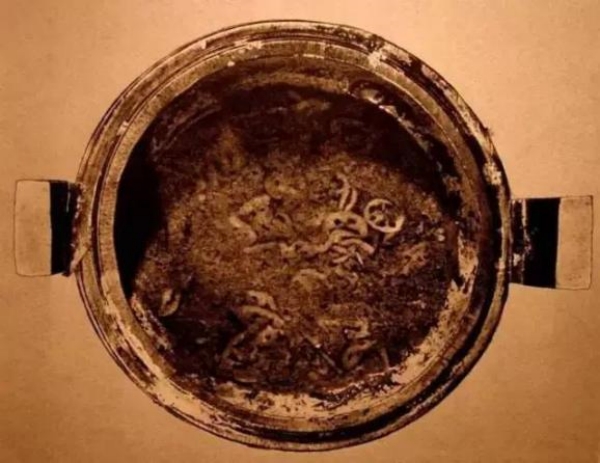
Lotus root soup unearthed from the Han tomb in Mawangdui
It is said that King Liu 'an (circa 179- 122 BC) of Huainan (present-day Anhui Province) invented tofu. (But if tofu was really invented so early, it did take a long time to become a popular food.)
Sima Qian (about 145- 87 BC) recorded that people in the Jiangnan area would eat rice and fish soup ("rice rice soup fish").
Many "Hu Manzi" ingredients were introduced to China from Central Asia, such as pepper, cucumber (cucumber), walnut, sesame (sesame), etc., as well as Hu cakes (naan). In the original Chinese names of these foods, the word "Hu" stood for "barbarian" or "alien"(and pepper is still called pepper today,"pepper of the barbarians").
Southerners have gradually fallen in love with sweet and sour (sour and sour) food.
The court opened a special greenhouse to grow rare vegetables.
In the 1st century AD, Buddhism began to be introduced to China.
Wei, Jin, Southern and Northern Dynasties
(220-589)
During the Western Jin Dynasty (265-317), the famous scholar Zhang Han gave up his official position in the north and returned to his hometown because he missed the perch chowder and schreberi soup in his hometown in Jiangnan.
Shu Xi (ca. 263-302) wrote "Cake Fu", a love letter to noodles and steamed buns, which can be called "pasta rhapsody".
In the 4th century AD, Chang Qu, a historian of the Eastern Jin Dynasty (291-361), mentioned that people in Sichuan liked bold and spicy flavors ("It's spicy and fragrant, but still tastes").
Emperor Wu of the Liang Dynasty (464-549) became a devout Buddhist and advocated a complete vegetarian diet.
Between 530 and 540 AD, Jia Sixie wrote the groundbreaking agricultural science and technology masterpiece "Qi Min Yao Shu", which included various recipes such as fermented bean, rice wine, vinegar, roasted suckling pig, dairy products and various pasta dishes.
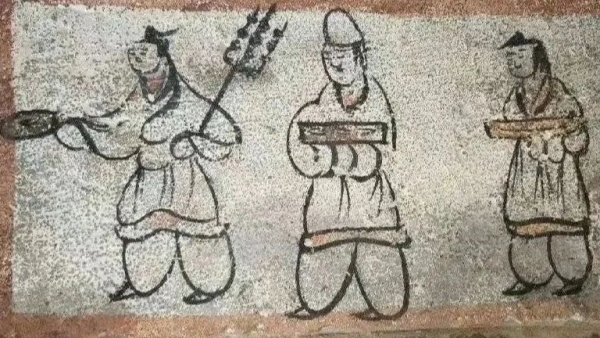
Brick mural "Barbecue Picture" unearthed from the Wei and Jin Dynasties tombs in New Town, Jiayuguan, Gansu Province
sui
(581-618)
Xie Feng wrote "Shi Jing", but this book has long been lost, and only fragments are found in later works.
Tang
(618-907)
In the Astana tombs in northwest China (near present-day Turpan), the dead were buried with pasta such as dumplings and wontons.
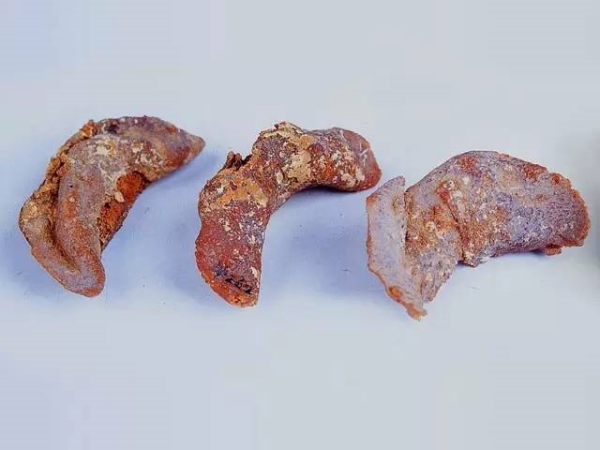
Dumplings unearthed in Astana tombs
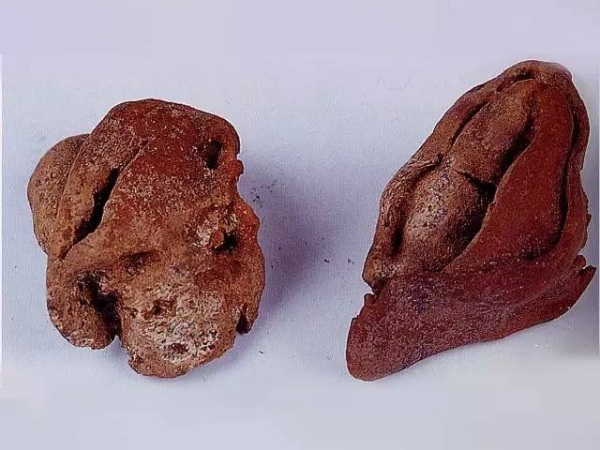
Wontons unearthed in Astana tombs
At the end of the 8th century, Lu Yu (ca. 733-804) wrote "Tea Classics", which was the world's first monograph on tea.
The word "dim sum" first appeared in a Chinese novel (originally used as a verb).
The "Silk Road" is booming and prosperous. Exotic cuisine was prevalent in Chang 'an, the capital of the Tang Dynasty (near today Xi'an).
Bhishunfan is making an edible landscape platter with carefully cut food.
In the 9th century AD, Cui Anqian, a Buddhist official, served a banquet of "vegetarian food".
High-class dignitaries love dairy products.
In the 10th century AD, tofu was mentioned in Tao Gu (903-970)'s work "Qing Yi Lu", which was the earliest known Chinese literary work to appear tofu.
In the 10th century AD, Niujie Ribao Temple, the oldest Muslim worship center in Beijing, was built, and the surrounding area developed into a halal food center.
The fall of the Tang Dynasty was partly attributed to Concubine Yang's lust for pleasure. A vivid example was her insistence on carrying fresh lychees from the south to the capital of the north.
song
(960-1279)
Rice has become a common staple food on people's tables, and Jiangnan has gradually become a prosperous and prosperous "land of fish and rice."
The poet Su Dongpo (1037-1101) wrote a few poems expressing his experience on cooking pork. During the Song Dynasty, he and many other important poets enthusiastically wrote gorgeous poems about food.
Nomads invaded, Kaifeng fell (1127), and the Song Dynasty court moved its capital to Hangzhou, where a new cuisine integrating the characteristics of the north and south gradually formed.
Kaifeng, the capital of the Northern Song Dynasty (then called "Bianliang"), and Hangzhou, the capital of the Southern Song Dynasty (then called "Lin 'an"), both witnessed the golden age of Chinese restaurants.
At the end of the 12th century, Song Gaozong praised the fish soup cooked by Sao Song.
People are gradually getting used to sitting on chairs and stools by tables and sitting less on the floor.
The earliest recipe books appeared, with ingredients and themes mainly rural natural vegetarian food. In the 13th century, the poet Lin Hong lived in seclusion in the mountains and forests and wrote "Mountain Family Qing Sacrifice". The recipes in it consisted of vegetables and food found in the mountains as the main ingredients. Among the existing written materials, this book mentions the modern concepts of "soy sauce" and "stir-fried" for the first time, and also describes the behavior of "eating hot pot" for the first time.
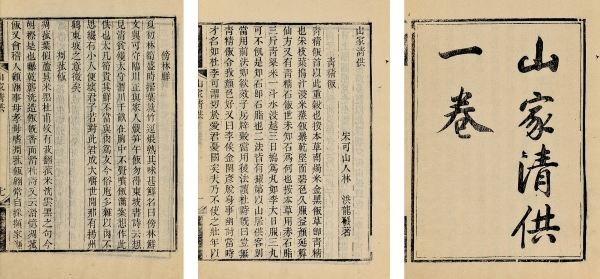
"Shan Family Qingzhi"
Tofu is very popular.
In vibrant and commercial southern cities, food and cooking methods have achieved fundamental diversification and refinement.
Soup dumplings made their debut on the dim sum stage.
Buddhist vegetarian restaurants and imitation meat dishes appear in Hangzhou.
Yuan
(1279-1368)
In 1279, the Mongolian army under Kublai Khan conquered all of China and established the Yuan Dynasty.
At the end of the 13th century, Marco Polo traveled in China and was amazed by Hangzhou's farmers 'markets and high living standards.
In 1330, the imperial physician Hu Sihui presented his own compilation of "Drinking and Eating" to Yuan Renzong. This is a medicine and nutrition manual with a chapter of recipes reflecting influences from the Middle East, Persia and Central Asia.
Mongolian soldiers may have introduced cheese-making technology to Yunnan.
Ming
(1368-1644)
In the 16th century, the great novel "Jin Ping Mei" contained strange and dazzling descriptions of food and sex. In a famous love scene, plum trees are indispensable props.
At the end of the 16th century, Li Shizhen compiled the Compendium of Materia Medica, which explained the nourishing effects of nearly 2,000 ingredients.
At the end of the 16th century, the novel "Journey to the West" mentioned food "chop suey".
At the end of the 16th century, new ingredients from the Americas such as corn, sweet potatoes and peppers began to completely reshape Chinese eating habits.
Chinese people have gradually fallen in love with eating shark fin.
Qing
(1644-1911)
In 1644, the Manchurian Qing army entered the Pass and conquered China. It also introduced some new eating habits, such as roasting and boiling large pieces of meat and eating dairy products. The court diet combines the characteristics of the Manchu and Han ethnic groups. The aristocratic Manchu people carried knives and chopsticks as tableware so that they could eat food with the characteristics of both ethnic groups at the same time.
Li Yu (1611-1680) wrote down his love for crabs and bamboo shoots in extremely meticulous and subtle words.
Emperor Qianlong (alive from 1711 to 1799 and reigned from 1736 to 1796) made several southern tours and had a special liking for the Jiangnan area. He brought some chefs back to the palace from Suzhou. Qianlong loved to eat roast duck very much.
Starting in the late 17th century, Europeans and Americans established trading posts in small foreign "factory" or warehouse enclaves in Guangzhou.
In 1792, Yuan Mei (1716-1798) wrote "Suiyuan Food List", which included a large number of recipes and also made detailed comments and explanations on food and diet theory, which was rich in content.
In 1793, the first British diplomatic delegation to China in history arrived in Beijing to meet with the elderly Emperor Qianlong. Members of the British delegation found Chinese barbecues and steamed buns difficult to eat, but praised dim sum.
In 1795, in a book titled "Records of Yangzhou Painted Boats", Li Dou (1749-1817) recorded a "Manchu and Han banquet" held in Yangzhou City. There were more than 90 dishes in total, including "crucian tongue stewed with bear paw".
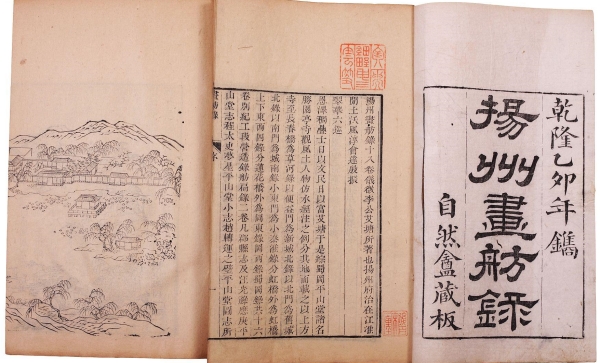
"Records of Yangzhou Painted Boat"
In the mid-19th century, Chinese people began to immigrate to the United States. "Miscellaneous" appears on American restaurant menus.
1876-1886 In 1989, Ding Baozhen (named after him "Gong Bao Ji Ding") served as governor of Sichuan.
At the end of the 19th century, Chen Mapo, a common person who opened a restaurant in Chengdu, created "Mapo Tofu". In 1909, a book introducing Chengdu was published, which mentioned her restaurant.
In 1896, China's (de facto) Foreign Minister Li Hongzhang visited the United States and was (wrongly) credited with introducing the bastard to the United States.
In 1897, Deda Western Food Co., Ltd. opened in Shanghai.
Empress Dowager Cixi (1835-1908) inadvertently named the famous Hui Muslim dish "It's Like Honey".
Republic of China
(1912-1949)
Abolish the national sacrificial activities in the imperial era.
Western restaurants in Shanghai are booming.
In the 1930s, British sinologist Paul Bullard ate roasted (beef) meat in Beijing.
People's Republic of China
(1949- )
In the 1950s/1960s, it is said that Yao Yilin, then Minister of Commerce, first mentioned that there are four major "cuisines" in China.
From the late 1950s to the early 1960s, Light Industry Publishing House published a series of books "Famous Chinese Recipes", introducing Chinese cuisine by region, with a total of twelve volumes.
In 1980, Wang Shaoquan published an article "China's Eight Cuisines" in the People's Daily.
In 1983, Suzhou writer Lu Wenfu published the novella "The Gourmet", a political fable centered on food.
In 2008,"Michelin Guide-Hong Kong and Macau 2009" was launched.
In 2016, the first "Michelin Restaurant Guide" in the mainland of China was published, namely "2017 Shanghai Michelin Guide." Since then, the "Guangzhou Michelin Guide"(2018),"Beijing Michelin Guide"(2020) and "Chengdu Michelin Guide"(2022) have been published one after another.
This article is excerpted from the new book "Junxing Food: A Chinese Food Feast Throughout Ancient and Modern" by food writer Fuxia Dunlop, which was published by The Paper News authorized by the publisher.

"Jun Xing Shi: A Chinese Food Feast Throughout Ancient and Modern Times",[English] Fuxia Dunlop/by He Yujia/Translation, Shanghai Translation Press, April 2024 edition




